Exercise is a crucial part of your pregnancy, whether in the first, second, or third trimesters. In fact, it comes strongly recommended by all doctors, unless clearly specified otherwise. It is common for pregnant mothers to be scared of working out, especially during the final trimester, due to the fear of preterm delivery or injury to the foetus. However, research clearly shows that exercise is actually beneficial for delivery, reducing any potential complications and making it comfortable and less difficult. Exercising in the ninth month of pregnancy is certainly possible with some minor changes in terms of style and body positioning to allow for the changes in your physical structure, as well as the needs of the foetus.
Is it Safe to Exercise During the 9th Month of Pregnancy?
The answer is ‘Yes’, it is completely safe to exercise during the ninth month of pregnancy, but this statement comes with a few necessary caveats. It is important you maintain the high standards of care you have been giving to yourself during this time, such as drinking enough water, eating a balanced diet rich in varied nutrients, getting at least eight to ten hours of sleep a day, and paying close attention to any changes in your body or emotional state. Further, it might be required to limit yourself to basic forms of exercise that do not put any strain on your joints and muscles.
Benefits of Exercising in the 9th Month of Pregnancy
There are various advantages when it comes to working out in the final month of pregnancy. Some of them include:
- Increase in Physical Strength: Regular exercise helps in the maintenance of general fitness while reducing weight gain. The latter being a common effect in the later stages of pregnancy. This reduces the chances of obesity-related complications that can impact the growing foetus.
- Reduction in Risk of Gestational Diabetes: In overweight or obese pregnant women, basic cardiovascular workouts lower the likelihood of developing gestational diabetes, as it can impact your health as well as your baby’s.
- Faster Recovery Period: Strengthening your pelvic floor muscles with exercises like Kegel has been shown to improve the recovery rate postpartum.
- Reduction in Constipation: Exercise can also help ease constipation, providing some much-needed relief.
- Reduction in Delivery Time: Working out can improve delivery time, and reduce pain, especially for a vaginal birth.
- Lowered Back Pain: This common complication of late pregnancy can cause much distress, but exercise is helpful for getting some respite.
Precautions Before Working-out in the Ninth Month of Pregnancy
As helpful as they are, exercises during this late stage of pregnancy can be fraught with complications. It is essential to take some precautions.
- The first and most important thing for you to do is consult your obstetrician/gynaecologist before embarking on any exercise regimen in the third trimester. Your doctor will help you choose the right exercises and provide any necessary guidance for conducting them safely.
- Only do exercises that are low impact. This means avoiding any that put undue stress on your ligaments and joints during pregnancy. This is crucial, as these body parts tend to be weak due to the production of pregnancy hormones.
- Avoid complicated exercises that involve too many body movements. Set a moderate pace, so you don’t overdo the workouts.
- Try not to exercise for long periods of time and remember to wear loose breathable clothing during the session. Good supportive shoes are essential, as they help maintain your posture, reducing any chances of anatomical misalignment. Good sports bras are also a must since pregnancy leads to breast augmentation.

How You Can Start Your Exercise Program
It is important to begin your regimen with mild gentle exercises that do not result in aches, difficulty in breathing, or fatigue. Thereafter, follow the tips below:
- You can increase the amount of activity slowly, as this is the best way to ensure that your body can take the extra pressure.
- If necessary, you can break your exercises into smaller segments, such as running ten minutes at a stretch, thrice a day, rather than thirty minutes at once.
- As explained before, the importance of hydration, balanced meals, and a regular sleep cycle cannot be stressed hard enough.
- Remember to warm up before by doing some simple stretching, as this reduces post-workout muscle pain.
- Please don’t do any exercise that raises body temperature, as this could affect the development of the baby. This means no working out in hot or humid areas.
When You Should Stop Exercising
If you experience any of the following symptoms while exercising, please stop immediately and consult with your doctor:
- Severe abdominal pain that appears suddenly
- Headache
- Dizzy feeling
- Vaginal leakage of amniotic fluid
- Pain or tightness in the chest
- Difficulty breathing
- Bleeding from the vagina
- Loss of balance
- Pain in the lower legs and calves
Safe Last Month of Pregnancy Exercises
Below are some safe and best exercises for 9-month pregnant women:
1. Yoga
Yoga is an amazing kind of exercise to do during pregnancy. In addition to being perfectly safe, it improves the flexibility and strength of your body. It is also known to greatly lower symptoms of anxiety and stress, while improving your sleep. Yoga further lowers body pains, while boosting breathing rates, as well as circulation. Studies show that yoga can fight pregnancy-related symptoms like nausea, headaches, and so on. However, if you feel that your yoga positions are causing any issues, please stop immediately and modify them to suit your physical condition.
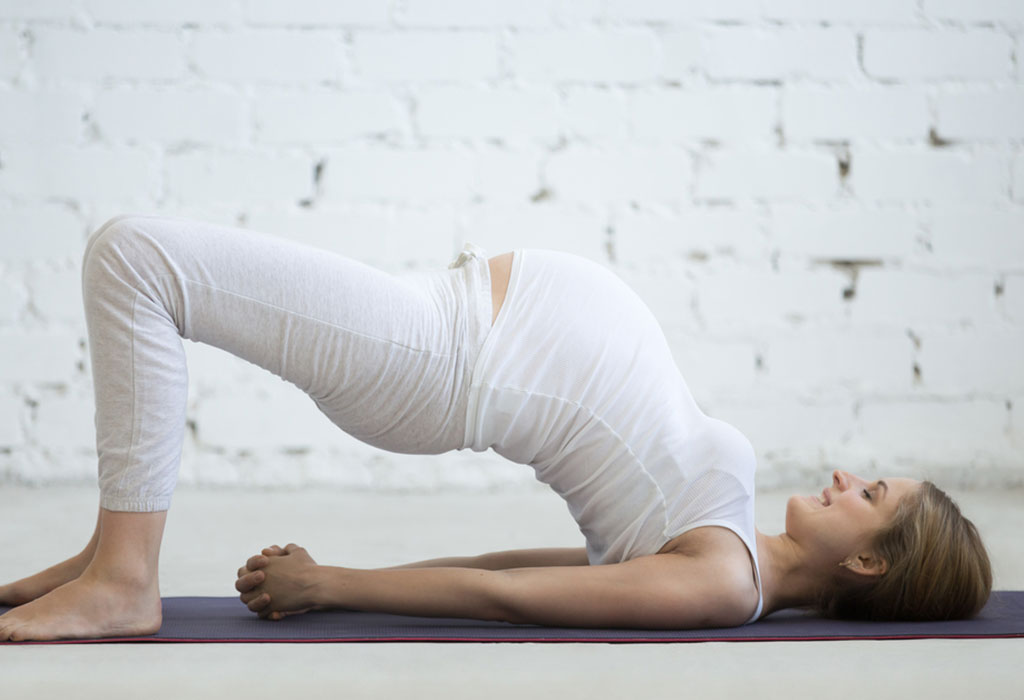
2. Exercise Ball
Using the exercise ball is quite safe, as well as effective, in order to make your abdominal muscles tougher, improving core strength. Remember to choose the right kind of exercise ball and ensure that you inflate it to suit your height.
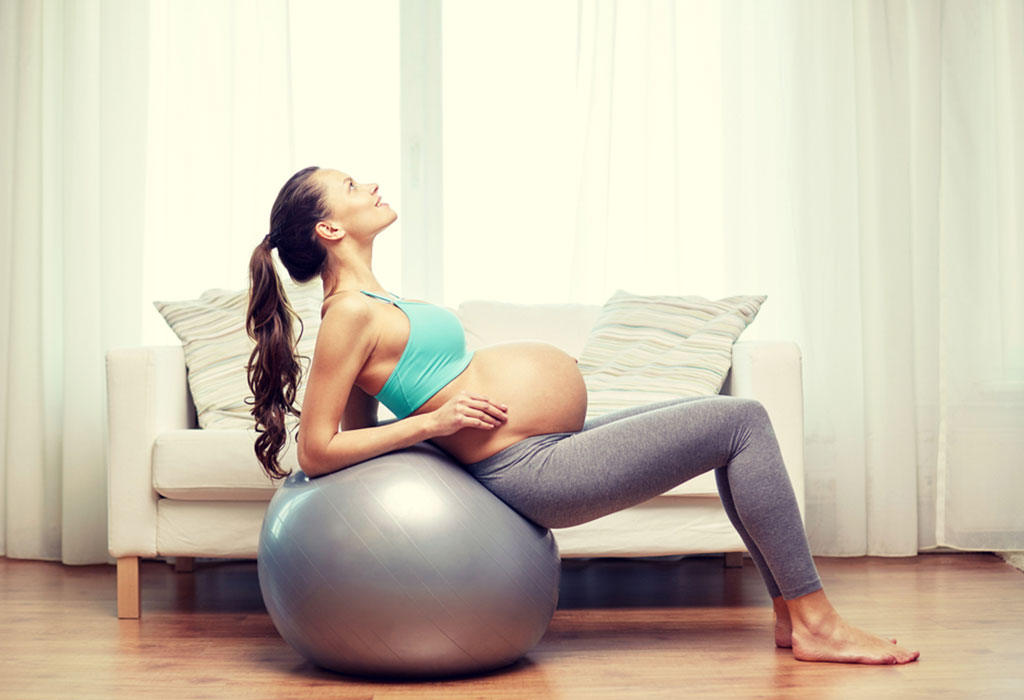
3. Pelvis Strengthening
Pregnancy puts a lot of pressure on the muscles of the pelvic floor, so performing exercises to strengthen the pelvis is quite helpful. These are some of the best nine-month pregnancy exercises available.
- Pelvic stretches involve keeping your feet firmly on the floor, and then stretching your legs away from each other while maintaining your posture. This will improve the flexibility of your pelvic floor and lower labour time, as well as pain during delivery.
- Pelvic tilts are another beneficial exercise that can help flip a baby in breech position into downward descending position, lowering labour difficulty. To do this, kneel down on the floor and bend over until your chest is almost to the ground. This will increase back muscle as well as core strength.
- The Cobbler Pose is another exercise that relaxes the tension in the lower body muscles. It can be performed sitting on the floor with your feet against each other. Next, slowly but firmly, move your knees down towards the ground until you feel your inner thigh muscles stretching. Keep this position for twenty seconds, relax for a minute, and repeat around five times.
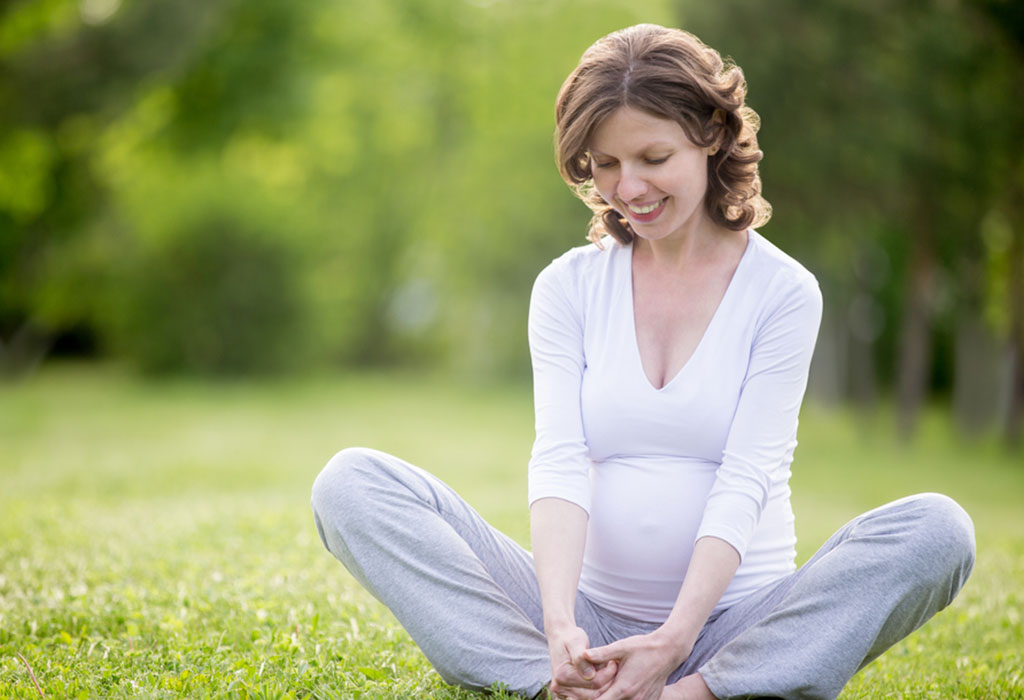
- Kegel exercises are very important during pregnancy, especially when if your labour is overdue and needs to be induced. Further, they help manage incontinence, fatigue and infections of the urinary system by keeping the vaginal muscles firm. It is quite simple to perform and involves tightening and releasing the muscles of the pelvis for ten to twenty seconds at a time. Do this exercise at least ten to twenty times a day.
4. Aerobic Exercises
Aerobics is one of the best and relatively easy ways to keep yourself fit during pregnancy. You can try walking for around ten to twenty minutes a day to promote flexibility, while improving cardiovascular health. Swimming is also recommended for the ninth month of pregnancy, as it is a great way of toning muscles and regulating your heart rate.
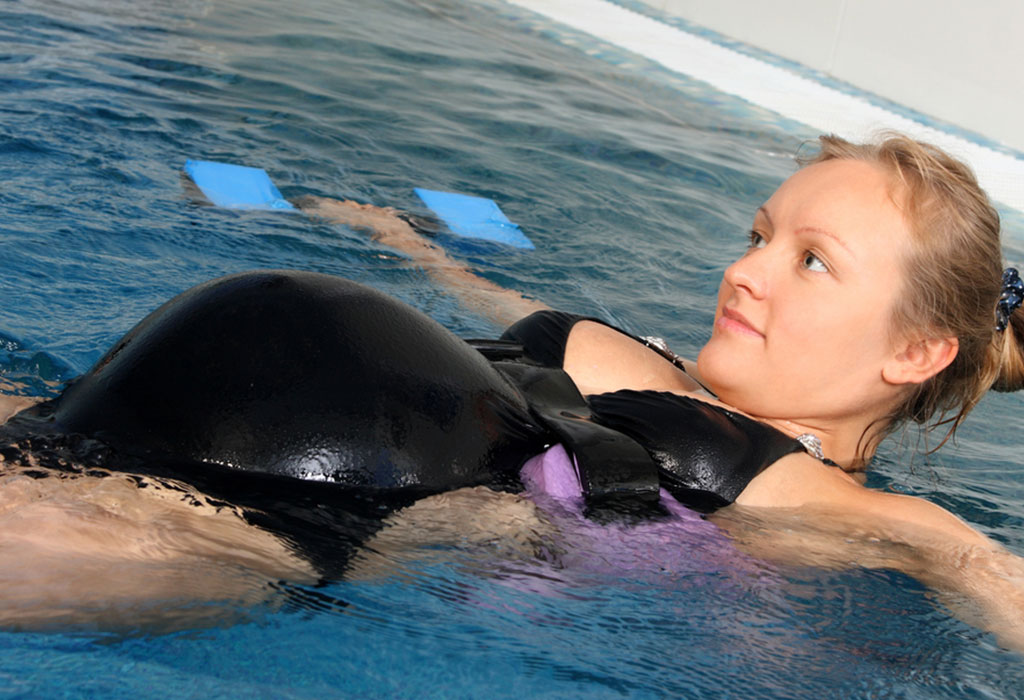
5. Pilates
Pilates is a popular regimen during pregnancy, as it greatly improves core strength and elasticity. This is important, as the growing baby weakens the abdominal muscles, which can lead to rib cage and back pain. Pilates is ideal, as they are done on hands and knees, which reduces the pressure on the abdomen and back. Please make sure you only practise Pilates under the guidance of a trainer experienced with pregnant women. This is to avoid accidentally straining your pelvic and back muscles, which might cause tears or injuries. Furthermore, incorrect pilates positions can cause foetal distress.

6. Squats and Lunges
These workouts are for your lower body. Regular squatting has been known to reduce labour time, as it makes the pelvic gap wider, allowing the baby to emerge without much effort. Doing squats requires minimal equipment. Simply stand shoulder-width apart and lower yourself to the ground until your hips are parallel to, or just below your knees. Repeat this about twenty times per day.
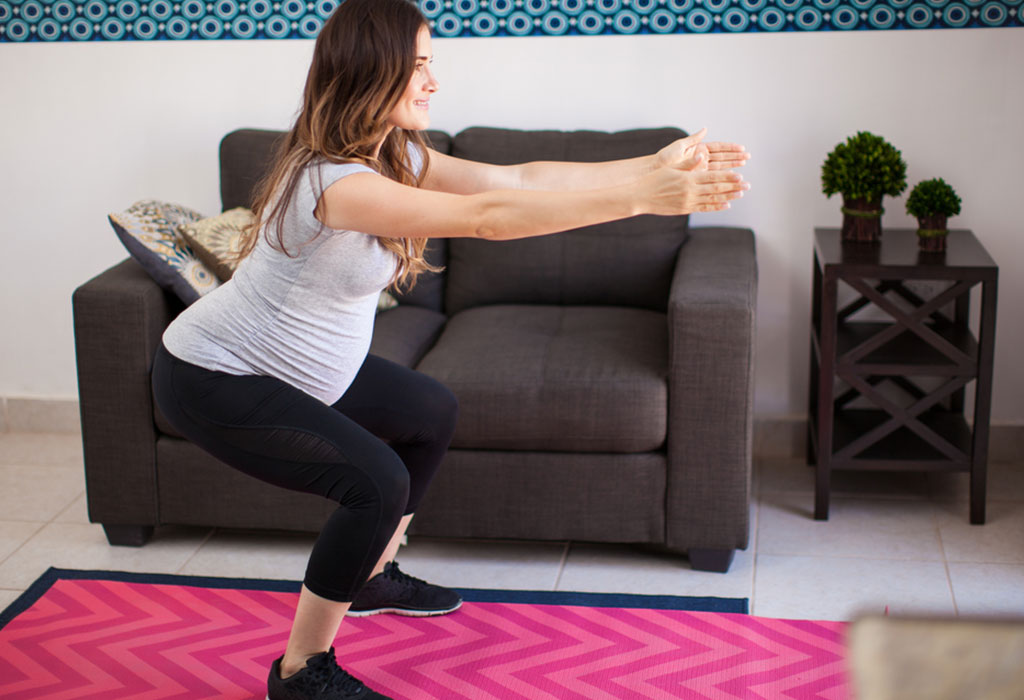
Next, lunges improve the range of hip motions, which gives the foetus enough space to turn around while descending. Start by standing with both legs together, then take a long step until your front leg is bent at the knee while the back leg is stretched out behind you. Please take the support of your partner, family member or friend when performing these exercises as they require proper balance.
When to Avoid Exercises During Pregnancy
While exercising is safe during the ninth month of pregnancy, there are times when you have to avoid exercising:
- This is not the time to try out a new activity. It is important to only stick to the basic exercises, avoiding anything that could cause strain.
- As already mentioned, avoid exercising if you undergo any unexpected symptoms such as dizziness, nausea and so on.
- Ensure that your workouts do not affect your day to day functions, such as eating and sleeping well.
- Keep in mind that exercises that have to do with lying on your back should be abstained from after the first trimester, in order to prevent pressure on your blood vessels and lower the rate of circulation.
- Avoid exercises that involve a change in altitudes like skiing, hiking or climbing. Similarly, sports like scuba diving are off-limits, as they can cause decompression sickness in both you and your baby.
While pregnancy is a wonderful time, by the ninth month, most women are exhausted. The body has changed drastically, making even simple things difficult. However, it is important to remember that exercise and diet are still essential parts of the pregnancy. Regular workouts can reduce stress and improve the difficulty of labour, making the process that much easier. Don’t forget to have someone oversee your exercises, as your contractions may happen at any time.
